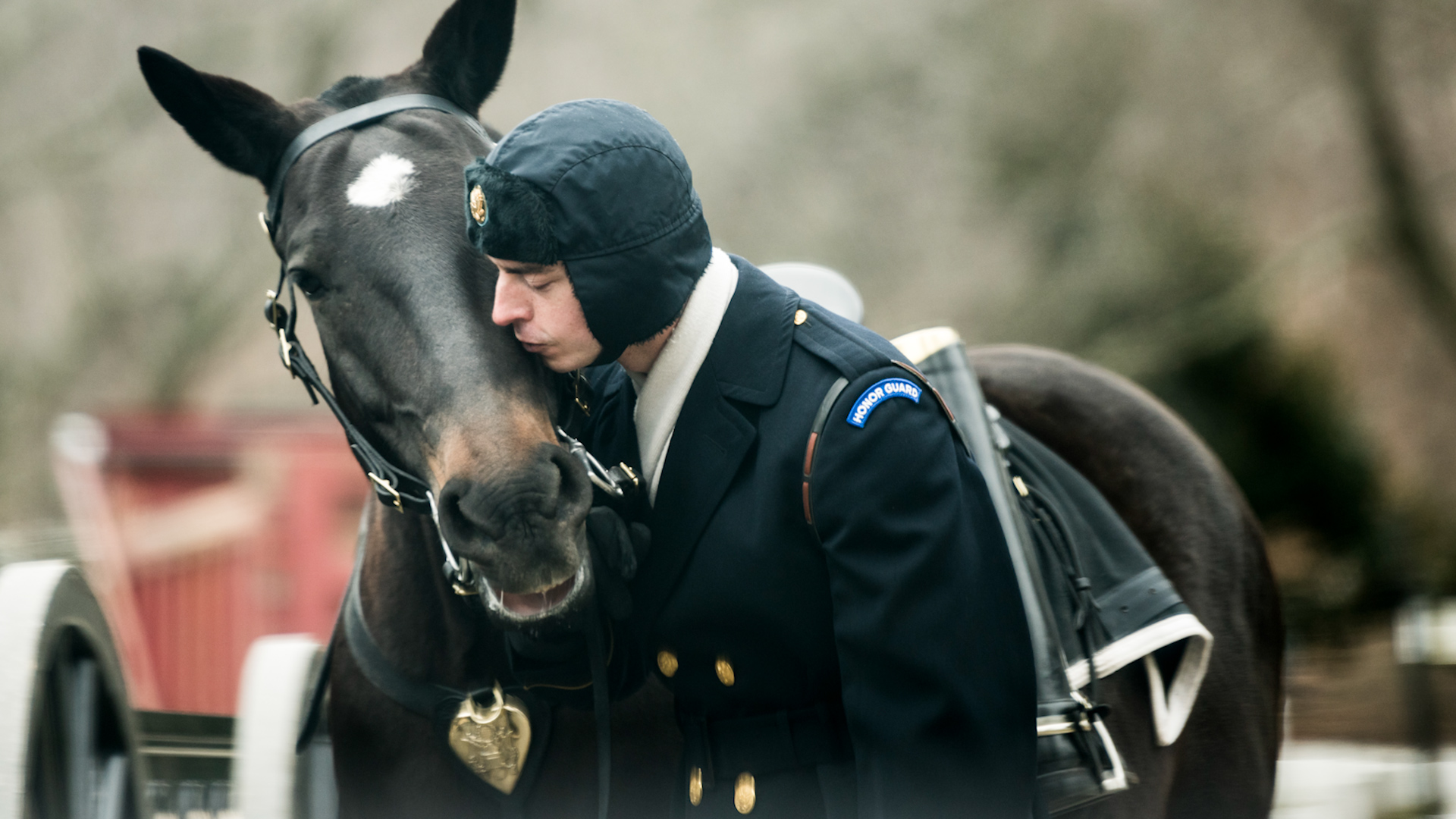
US Army restores horse-drawn funerals at Arlington Cemetery after welfare scandal

Horse-drawn coffins will return to Arlington National Cemetery from June – nearly two years after their use was suspended amid serious concerns over horse welfare.
The ceremonial tradition, one of the most iconic symbols of military funerals in the United States, was put on hold following the deaths of two horses in 2022.
A subsequent investigation revealed poor-quality feed, insufficient pasture space and signs of overwork.
Now, following an overhaul of the programme and the introduction of strict welfare standards, the US Army says it's ready to reintroduce the "caisson platoon" – albeit on a much-reduced schedule.
Funeral services will be capped at two per day and no more than 10 per week, with horses operating in rotational squads to avoid fatigue.
Major General Trevor Bredenkamp, Commander of the Military District of Washington, told reporters the military had overhauled the processes behind caring for the animals and had been "working tirelessly with equine experts to buy horses and improve their veterinary care, training and equipment".
A total of 22 horses – split into two squads of 11 – will support services from June, with the aim of expanding to four squads in the future.
The first ceremonies will be reserved for those killed in action, Medal of Honor recipients and senior officers.
The US Army says this phased return will ensure the animals are not overburdened and that lessons from the 2022 fatalities are not forgotten.
"We are pleased to reintegrate the caisson conveyance into funeral services at Arlington National Cemetery," said Karen Durham-Aguilera, the executive director of the Office of Army Cemeteries.
"This solemn and revered tradition honours our veterans and service members as they are laid to rest."
British Army's best practice
Across the Atlantic, the British Army's Household Cavalry Mounted Regiment (HCMR) is often held up as a benchmark for ceremonial horse welfare.
Based at Hyde Park Barracks in central London, the regiment takes part in high-profile state occasions including Trooping the Colour, the State Opening of Parliament and royal funerals.
Horses are cycled between urban and rural postings, with time spent at grass and round-the-clock access to expert veterinary care.
New recruits undergo a 12-week riding course at the Household Cavalry Training Wing in Windsor, followed by a four-week "kit ride" at Knightsbridge.
The training is focused not just on turnout and drill, but on equitation, care routines and building confidence in the saddle.
Before being permitted to ride in public and in front of the King, personnel must demonstrate full competence in horse-handling and ceremonial procedures.
Horses are introduced to London's noise, traffic and crowds through a progressive programme, ensuring they are safe and confident before entering service. Time away from the capital is also prioritised.
But sometimes even the best-trained cavalry soldiers and horses can get into difficulties.
In 2024, HCMR horses were involved in a major incident in central London when a number of mounts broke free and ran amok.
In what are now infamous images, a grey horse was seen covered in blood after coming into contact with a vehicle.
All those involved, personnel and horses alike, made a full recovery, returning to duties in the months following the incident.
Culture shift in US
The US Army appears to be moving in a similar direction to the standards established in the UK by the likes of the Household Cavalry.
Older horses have been retired, new ones sourced and trained, and long-term care is now being built into the funeral programme's structure.
Officials say they've taken guidance from civilian equine specialists and implemented a new regime of rest periods, equipment upgrades and tailored nutrition plans.
While the return of the horses may be limited in scope for now, US Army leaders say the focus is on doing things right – not rushing back to full capacity.









